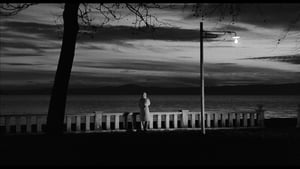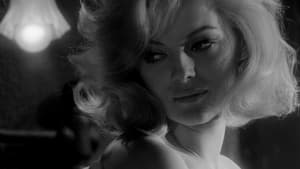Contact: [email protected]
Video Sources 0 Views
- Watch trailer
- The Possessed

Synopsis
Table of Contents
ToggleReview: The Possessed 1965 Full Movie – Unraveling the Enigma of Existence

Introduction
In the annals of cinematic history, few films provoke as much intrigue and contemplation as The Possessed 1965. Directed by the enigmatic Andrzej Wajda, this haunting masterpiece delves into the depths of human psyche and societal decay. However, what sets this exploration apart is its recent re-release in an early colored version, stirring debates among cinephiles and scholars alike. In this article, we embark on a journey to unravel the significance of this colored rendition and its impact on the timeless narrative of “The Possessed 1965.”
Check The Full Colorized Movies List
Check Our Colorized Movies Trailer Channel
Understanding The Possessed 1965: Director, Cast, and Genre
The Possessed 1965 emerges from the mind of the esteemed Polish filmmaker Andrzej Wajda, renowned for his incisive portrayals of human complexity. The film features a stellar cast, including the iconic actor Andrzej Łapicki delivering a mesmerizing performance. Genre-wise, Wajda defies conventions, blending elements of psychological thriller, political drama, and existential meditation into a cinematic tour de force.
Wajda’s vision for The Possessed 1965 transcends mere storytelling; it’s a searing indictment of moral decay and political corruption. Through a kaleidoscopic lens, he explores the dark undercurrents of post-war Poland, laying bare the contradictions and hypocrisies of the human condition.
Exploring the World of The Possessed 1965: Plot and Characters
At its core, The Possessed 1965 unfolds against the backdrop of political upheaval and ideological fervor in post-war Poland. The narrative follows a disparate group of characters whose lives intersect in unexpected ways, leading to a series of tragic and revelatory events. From the disillusioned intellectual to the zealous revolutionary, each character grapples with their own demons and desires, mirroring the collective turmoil of a nation in flux.
Wajda’s narrative is a labyrinth of ambiguity and ambiguity, challenging viewers to confront uncomfortable truths about power, ideology, and the human capacity for self-deception. As the plot unfolds, secrets are revealed, alliances are forged and shattered, and the line between reality and illusion blurs beyond recognition.
The Art of Film Colorization
Film colorization, the process of adding color to black and white footage, has long been a subject of contention within the cinematic community. While proponents argue that it revitalizes classic films for contemporary audiences, detractors raise concerns about its impact on the original artistic vision and historical authenticity.
The art of colorization is a delicate balancing act, requiring careful consideration of tone, texture, and mood. When done well, it can breathe new life into familiar images, enriching the viewing experience for audiences. However, it also runs the risk of altering the filmmaker’s intended aesthetic and diluting the film’s thematic resonance.
Early Colored Films: A Brief History
The emergence of early colored techniques in cinema marked a pivotal moment in the industry’s evolution, paving the way for future innovations in visual storytelling. From hand-painted frames to early experiments with tinting and toning, filmmakers have continuously pushed the boundaries of creativity and technology.
Early colored films offered audiences a glimpse into worlds previously unseen, expanding the possibilities of cinematic expression. From the vibrant hues of silent epics to the lush palettes of early Technicolor musicals, colorization opened up new avenues for storytelling and spectacle. However, it also presented challenges in terms of production costs, technical limitations, and artistic integrity.
The Possessed 1965 and Its Early Colored Version
The decision to release The Possessed 1965 in a colorized format represents a bold artistic choice, inviting viewers to experience Wajda’s magnum opus through a new lens. While purists may lament the alteration of the original black and white aesthetic, others find value in this reinterpretation, highlighting previously unseen details and nuances.
The early colored version of The Possessed 1965 offers a fresh perspective on Wajda’s visual storytelling, enriching the film’s historical tapestry with vibrant hues and atmospheric textures. From the shadowy interiors of clandestine meetings to the stark landscapes of post-war Poland, colorization adds another layer of depth to the film’s narrative canvas.
The Debate Over Film Colorization
As with any controversial artistic endeavor, the colorization of classic films sparks heated debates within the film community. While some argue for preservation and fidelity to the director’s intent, others advocate for creative experimentation and accessibility to modern audiences. Ultimately, the debate underscores the complex interplay between tradition and innovation in cinema.
The controversy surrounding film colorization reflects broader tensions within the industry between preservation and progress. While purists may decry any deviation from the original black and white aesthetic, others see colorization as a means of breathing new life into classic films for contemporary viewers. As technology continues to advance, the boundaries between art and commerce become increasingly blurred, raising questions about the future of cinematic preservation and interpretation.
Examining The Possessed 1965 as an Early Colored Film
Viewing The Possessed 1965 in its early colored incarnation offers a unique perspective on Wajda’s visual storytelling prowess. From the vibrant hues of post-war landscapes to the subtle nuances of character expression, colorization adds another layer of depth to the film’s narrative tapestry. However, it also raises questions about the balance between artistic reinterpretation and historical authenticity.
For some viewers, the early colored version of “The Possessed 1965” may enhance their appreciation of Wajda’s masterwork, providing a fresh interpretation of familiar scenes and themes. For others, it may detract from the film’s original aesthetic and emotional impact, obscuring the stark beauty of its black and white imagery. Ultimately, the decision to embrace or reject colorization is a matter of personal preference, reflecting the diverse perspectives within the cinematic community.
Influence and Legacy: The Possessed 1965’s Impact on Cinema
Beyond its immediate impact, “The Possessed 1965” has left an indelible mark on the cinematic landscape, inspiring generations of filmmakers and artists. From its influence on political cinema to its lasting legacy in Polish filmmaking, Wajda’s masterpiece continues to resonate with audiences worldwide.
Wajda’s bold exploration of power, ideology, and human frailty in “The Possessed 1965” has reverberated throughout the annals of cinematic history, inspiring countless filmmakers to push the boundaries of storytelling and expression. From Roman Polanski to Krzysztof Kieślowski, Wajda’s influence can be felt in the work of directors across the globe, underscoring the enduring power of his cinematic vision.
Director’s Cinematic Legacy: Beyond The Possessed 1965
Wajda’s cinematic legacy extends far beyond “The Possessed 1965,” encompassing a diverse body of work that transcends genre and convention. His profound insights into the human condition, coupled with his mastery of visual storytelling, cement his status as one of cinema’s most revered auteurs.
From the harrowing realism of “Ashes and Diamonds” to the epic scope of “Man of Marble,” Wajda’s films capture the complexities of Polish history and society with unparalleled depth and sensitivity. His legacy serves as a testament to the power of cinema to illuminate the darkest corners of the human experience and inspire change in the world.
Themes Explored in The Possessed 1965
At its core, “The Possessed 1965” grapples with themes of power, ideology, and moral corruption, painting a searing portrait of post-war Poland. Through the intersecting lives of its characters, Wajda explores the corrosive effects of political fanaticism and personal ambition, revealing the fragility of human ideals in the face of tyranny and deceit.
The film’s examination of the human psyche is both harrowing and illuminating, probing the depths of moral ambiguity and existential despair. From the tormented intellectual to the ruthless revolutionary, each character embodies conflicting impulses and desires, mirroring the moral chaos of a society in transition.
Reception and Controversy Surrounding The Possessed 1965
The release of “The Possessed 1965” in its early colored version has sparked both acclaim and controversy among critics and audiences. While some praise the newfound vibrancy and depth, others lament the departure from the film’s original aesthetic. Nevertheless, the debate underscores the enduring relevance of Wajda’s masterpiece in contemporary discourse.
Critics have praised the film’s incisive critique of political ideology, its richly drawn characters, and its atmospheric cinematography. However, others have raised concerns about the impact of colorization on the film’s integrity, arguing that it detracts from Wajda’s original vision.
Where to Watch The Possessed 1965 Online
For those eager to experience the haunting brilliance of “The Possessed 1965,” the film is available on various streaming platforms, ensuring accessibility to audiences worldwide. Whether in its original black and white format or the early colored rendition, Wajda’s opus remains essential viewing for cinephiles and newcomers alike.
FAQs About The Possessed 1965
Common queries surrounding “The Possessed 1965” range from its historical context to its thematic resonance in modern times. By addressing these frequently asked questions, viewers can gain a deeper understanding of the film’s enduring appeal and cultural significance.
Q: Is The Possessed 1965 based on a true story?
A: While the film is inspired by the novel “The Possessed” by Fyodor Dostoevsky, it takes significant liberties with the source material to reflect the political and social realities of post-war Poland.
Q: What is the significance of the film’s title?
A: The title “The Possessed 1965” refers to both the psychological and political themes explored in the film, as well as its release year. It serves as a reflection on the nature of power and ideology, and their influence on individual and collective behavior.
Q: What is the message of “The Possessed 1965”?
A: The film offers a damning critique of political fanaticism and moral corruption, highlighting the dangers of unchecked ideology and personal ambition. Through its complex characters and layered narrative, “The Possessed 1965” invites viewers to confront uncomfortable truths about power, morality, and the human condition.
Conclusion
In conclusion, “The Possessed 1965” stands as a haunting meditation on the complexities of human nature and the perils of ideological fervor. While the early colored version offers a fresh perspective on Wajda’s masterwork, purists may still prefer the original black and white presentation. Regardless of personal preference, one thing remains clear: the power of “The Possessed 1965” lies not in its color palette, but in its profound exploration of the human psyche and the existential dilemmas of a society in turmoil. As we continue to grapple with the enduring legacy of Wajda’s masterpiece, let us heed its warnings and strive to confront the darkness within ourselves and the world around us.













